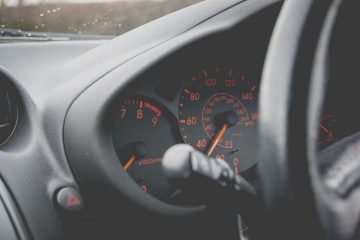There are few investments that are as expensive, personal, and necessary as a vehicle. Make no mistake, vehicles are expensive. Expenses like gas, car insurance, and taxes are over and above the initial purchase price. However, we can still take preventive maintenance measures to help us limit the extra expenses that vehicles require and keep our vehicles running well into their older years. Best of all, we do not have to be a mechanical genius to take care of our vehicles.
Look at your manual
There are countless variations of vehicles on the road today, even the vehicles of the same make and model change year-to-year. As such, even though vehicle maintenance has not changed all that much and is similar vehicle-to-vehicle, it is still best to consult your vehicle’s manual to find out its specific needs. Some vehicles need oil changed more frequently or with a different type of grade. Other vehicles require different tire pressure or wiper blade lengths. Also, as each vehicle is different, many manuals come with a list of maintenance steps to take at various milestones such as at 30,000 miles and 50,000 miles. While these markers are not always perfect, they give a good idea of what maintenance you may need to do for your specific vehicle as you approach each milestone.
If you bought a used vehicle, and it did not come with the manual, you can search the Internet. Generally, the automaker of your vehicle will have the manual available on their website. Another option is looking for your automaker’s mobile app. After looking at your manual, you can set up some reminders in your phone, or make a spreadsheet that you can mark off and track maintenance that you have completed.
Preventive tire maintenance
When it comes to your vehicle, checking your tires is one of the easiest ways to keep your vehicle running smoothly and catching issues before they become severe. First, check your tire pressure about once a month and before long trips. This will alert you to small leaks. You should consult your vehicle’s manual for the recommended PSI. Keeping your tire pressure up can also increase your mileage and reduce unnecessary wear on your tires.
The second easy tire maintenance step you can do is check your tire’s tread. You can do this by taking a quarter and placing it between the treads of your tire with the head of Washington pointing to the inside of the tire. If you can see the top of Washington’s head then it is about time to look for new tires. Getting regular tire rotations can help reduce unnecessary wear on your tires and increase the life of your tires. You can expect tires to typically last around 50,000 miles – this will vary depending on the tire and your driving habits.
Preventive under the hood maintenance
Another easy way to improve how your vehicle runs and reduce more expensive repairs is by simply looking under the hood. For some, this can be daunting, but as you will see, this can be simpler than you might expect.
The first thing you would want to check under the hood is your fluids: oil, transmission, brake, coolant, and wiper fluid. Consulting your vehicle’s manual can be a good way to find where each of these are under the hood. Topping off fluids like the wiper fluid is generally easy to do, and by doing it yourself can save you a trip to the mechanic.
Changing your oil is a little different. You will want to again consult your vehicle’s manual to determine type and frequency of oil changes. You can also change the oil yourself, but you may not find it worth it when considering the time it takes versus the amount of money you save. If you do decide to change the oil yourself, a quick Google search may provide you with the necessary information and steps to change your vehicle’s oil.
While you are looking under your hood, it is a good idea to check the serpentine belt and timing belt for cracks. This indicates wear, and it is a good idea to get them replaced before they crack. These belts can sometimes be changed on your own, but this will vary depending on your vehicle. The serpentine belt lasts around 60,000 to 80,000 miles.
The last few things you can easily check under the hood is the battery connections and spark plugs. Checking the battery connections is as simple as checking for any excess buildups on the leads and making sure the connections are made. Excess build up can make starting the vehicle more difficult and sometimes make you think your battery is dead. Using a little steel brush can quickly get this taken care of. If you need to check the connections, make sure the vehicle is not on, and remove the negative end first and then the positive.
Spark plugs are also easy to check and change. Bad spark plugs can make life a lot harder on your engine than need be, so getting them changed when needed can prevent more expensive repairs. Like the battery, check to see if there is any excess buildup or cracks on your spark plugs. If there are you can change them yourself or take your vehicle to a mechanic to have the job done.
General care maintenance
Outside of those maintenance steps that can help prevent issues keeping your vehicle from running well, there are other steps that can help keep your vehicle’s value and make it more pleasant to drive. The first is wiper blades.
Wiper blades should be changed every time they get streaky or are just not removing water like they should. It is a good idea to check wiper blades every six months. Consult your vehicle’s manual for what size wipers you need. Changing wiper blades are generally as easy as following the instructions on the packaging.
Second is the cabin air filter. The cabin air filter cleans the air that comes into the cabin of the vehicle. It captures dirt and pollen and keeps that from circulating. Consult your vehicle’s manual for how to access it – generally, it is as easy as opening a box and changing it. This is easily one of the simplest forms of vehicle maintenance and can be done by just about anyone.
Finally, washing and waxing your vehicle can keep it looking fresh and retain the value of your vehicle by reducing the damage of salt, dirt, and rust. I would recommend at least washing your vehicle once a month, and waxing once every six months – once in the Spring and once in the Fall.
Vehicle maintenance does not need to be hard or overwhelming. There are plenty of steps that we can take to keep our vehicles running well and catch issues before they become expensive. The best suggestion I can give is, make a list where you check a couple of items at a time instead of all at once. It will be less overwhelming and have the added benefit of keeping your vehicles health routinely checked throughout the year.
Quote of the day: At some point, if you don’t take care of the roads today, it’s like any other maintenance issue: you’re going to end up paying a lot more down the road. – Matt Mead


